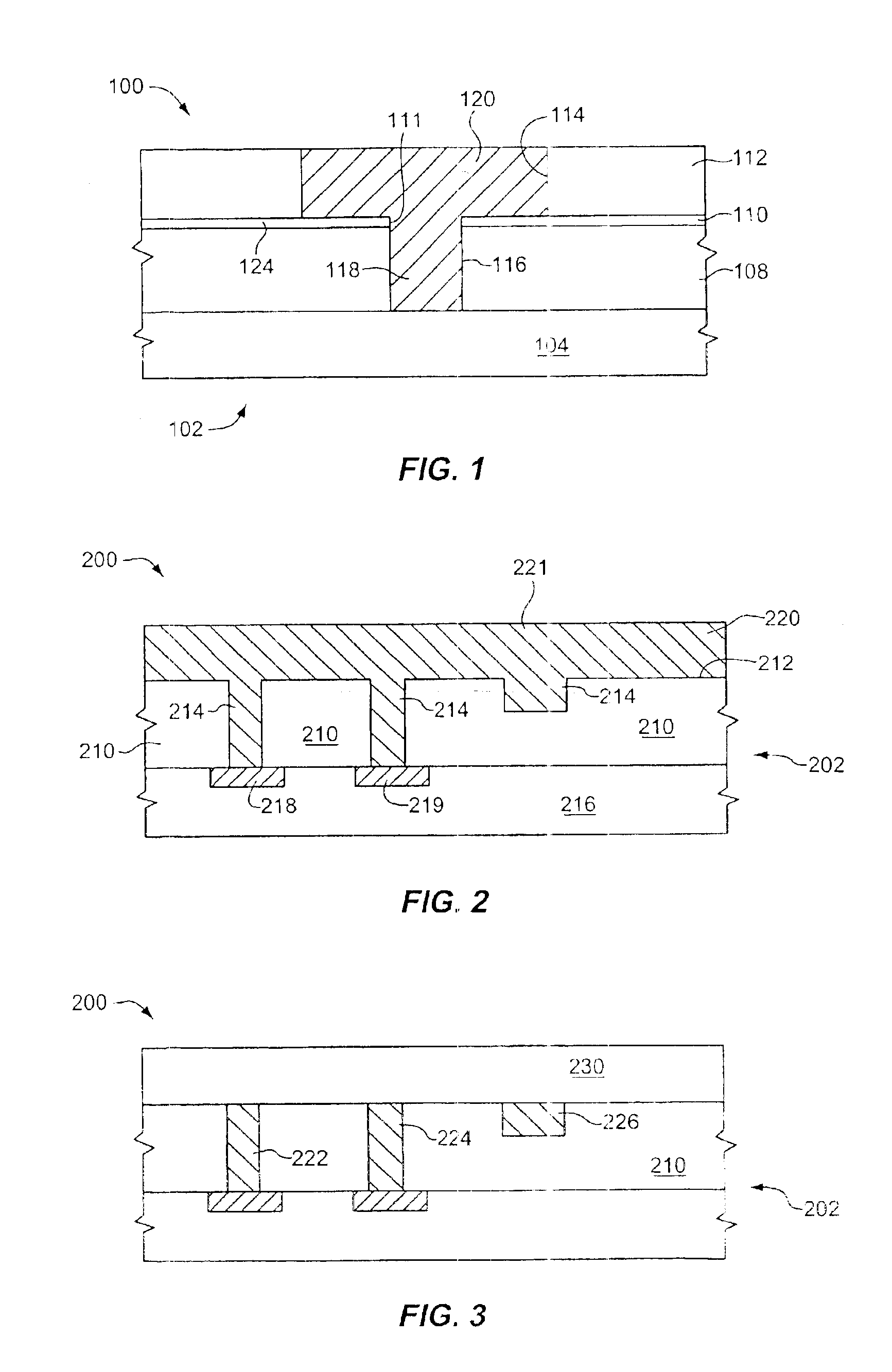Silicon carbide having low dielectric constant
a silicon carbide and dielectric constant technology, applied in the direction of basic electric elements, semiconductor/solid-state device manufacturing, electric apparatus, etc., can solve the problems of resistance-capacitance (rc) coupling and the resulting rc delay becoming more of a problem
- Summary
- Abstract
- Description
- Claims
- Application Information
AI Technical Summary
Benefits of technology
Problems solved by technology
Method used
Image
Examples
example 1
[0061]A series of exemplary low-k SiC films was fabricated using a PECVD method in accordance with the invention using the low-k precursor reactant ETMS. Each low-k SiC film was deposited on a 200 mm silicon semiconductor wafer substrate in a Novellus “Sequel” model, 6-station dual-frequency PECVD apparatus. The substrate surface before processing comprised monocrystalline silicon. The low-k SiC was deposited at a wafer temperature of about 400° C. Pure low-k precursor ETMS reactant gas was flowed into the process reaction chamber at a flow rate of 500 sccm. Process conditions between example wafers were varied to determine the effect of various operating parameters on film characteristics.
[0062]Inert helium gas was mixed with the ETMS precursor gas in a gas mixer and the gaseous reactant mixture was introduced into the reaction chamber at a constant flow rate. The flow rate of helium gas varied in a range of about from 1000 sccm to 3000 sccm. HF RF power was applied to the showerhe...
example 2
[0070]A series of doped, low-k SiC films was deposited on silicon substrates using conditions similar to those in Example 1, except carbon dioxide doping gas, CO2, was introduced into the reaction chamber instead of inert helium gas. Operating conditions and measured film characteristics are presented in Table 4, below.
TABLE 4Rec-ipeNum-ETMSCO2PresHFLF k (1Si—C / ber(Sccm)(Sccm)(Torr)(W)(W)RI hr)Si—O31500150026003001.636 3.281.1232500300026003001.6553 3.530.8633500450026003001.6672 3.680.7434500150046003001.5707 2.931.1035500300046003001.5782 3.100.8836500450046003001.5834 3.190.7837500150026006001.6539 3.450.9638500300026006001.6721 3.760.7439500450026006001.6837 3.920.62
[0071]The films had a thickness in a range of about 75 nm to 79 nm. The stability of the dielectric constant, k, of the films was tested. The measured k-values at one hour after formation of the films was in a range of about 2.9 to 3.9. The dielectric constant was measured right after deposition and aft...
example 3
[0074]A series of exemplary low-k SiC films was fabricated using a PECVD method in accordance with the invention using the low-k precursor reactant HMDS. Each low-k SiC film was deposited on a 200 mm silicon semiconductor wafer substrate in a Novellus “Sequel” model, 6-station dual-frequency PECVD apparatus. The substrate surface before processing comprised monocrystalline silicon. The low-k SiC was deposited at a wafer temperature of about 400° C. Pure low-k precursor HMDS reactant liquid was injected into the mixing bowl at a flow rate in a range of about 1.0 ccm to 3.0 ccm. The liquid HMDS was gasified in the mixing bowl, where it was mixed with CO2 doping gas. The constant flow rate of CO2 doping gas varied between wafers in a range of about from 2000 sccm to 5000 sccm. The resulting reactant gas mixture was fed into the CVD reaction chamber. HF RF power was applied to the showerhead at a frequency of 13.56 MHz, and the HF power was varied in a range of about from 400 Watts to 7...
PUM
 Login to View More
Login to View More Abstract
Description
Claims
Application Information
 Login to View More
Login to View More - R&D
- Intellectual Property
- Life Sciences
- Materials
- Tech Scout
- Unparalleled Data Quality
- Higher Quality Content
- 60% Fewer Hallucinations
Browse by: Latest US Patents, China's latest patents, Technical Efficacy Thesaurus, Application Domain, Technology Topic, Popular Technical Reports.
© 2025 PatSnap. All rights reserved.Legal|Privacy policy|Modern Slavery Act Transparency Statement|Sitemap|About US| Contact US: help@patsnap.com



